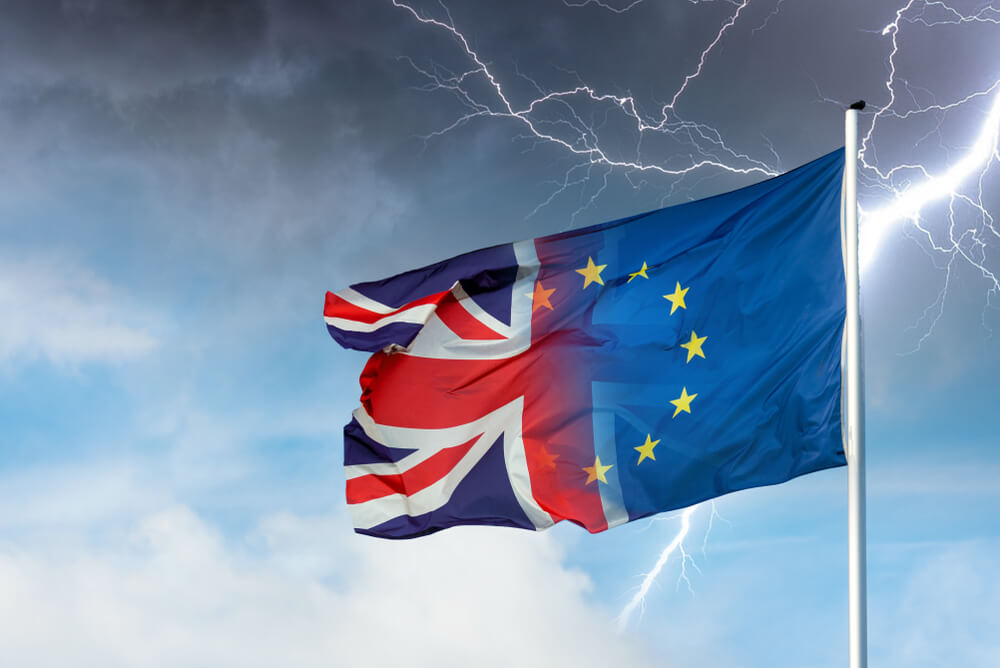Britain and the European Union said Monday that Brexit talks were making progress — but not yet enough to ensure a deal by the end of the month — as the U.K. government tried to look beyond the country’s stalled EU exit with a wide-ranging policy platform read by Queen Elizabeth II in a pomp-filled ceremony in Parliament.
In terms of historical importance, the painstaking paragraph-by-paragraph talks at the EU’s glass-and-steel Berlaymont headquarters outweighed the regal ritual in which an ermine-bedecked monarch delivered a speech on the priorities of a Conservative government that could last as little as weeks or months.
But the spectacle, complete with horse-drawn coaches, lords in scarlet robes and a diamond-studded crown, at least provided a diversion from the long Brexit grind.
Britain is scheduled to leave the EU on Oct. 31, and an EU summit on Thursday or Friday is considered one of the last possible chances to approve a divorce agreement. Prime Minister Boris Johnson insists the country will leave at the end of the month with or without a deal.
Technical teams from Britain and the EU worked through the weekend to secure a last-minute deal, although both sides said significant gaps remain between their positions.
Johnson’s spokesman, James Slack, said “the talks remain constructive but there is still a lot of work to do.”
Discussions centered on the difficult issue of the future border arrangements between EU member Ireland and Northern Ireland, which is part of the U.K. Britain has put forward a complex proposal to eliminate the need for customs checks, but EU officials say more work is needed.
An EU diplomat familiar with the talks said there would likely need to be a three-month extension to Brexit to turn the proposals into a legally binding deal.
“There are big problems remaining to counter smuggling and fraud because the British outlines are still that vague,” said the diplomat, who spoke on condition of anonymity because the talks are ongoing. “There is momentum but there is still little movement.”
Arriving for a meeting of EU ministers in Luxembourg, Irish Foreign Minister Simon Coveney said “the less we say now, the better.”
Despite his reticence, Coveney said “a deal is possible, and it is possible this month. May be possible this week. But we are not there yet.”
Coveney insisted it was essential to give the negotiators time to iron out the remaining difficulties.
“There is still a lot of work to do,” he said.
In London, Queen Elizabeth II delivered a speech outlining an ambitious — and critics say undeliverable — legislative program for Johnson’s government.
The 10-minute speech, read by the 93-year-old monarch from a gilded throne in the House of Lords but written by the government, included more than 20 bills, including a law to implement an EU withdrawal agreement, should one be reached.
It also contained plans for post-Brexit reforms to agriculture, fishing and immigration — ending the automatic right of EU citizens to live and work in Britain in 2021. The speech also included a long list of domestic policies, from longer sentences for violent criminals to no-fault divorce, tougher air pollution rules and new building-safety rules.
The government’s critics called Monday’s speech a stunt, because Johnson’s Conservative administration lacks a majority in Parliament and an election looks likely within the next few months, whether or not Britain leaves the EU as scheduled on Oct. 31.
The speech was part of the State Opening of Parliament, a ceremony steeped in centuries-old symbolism of the power struggle between Parliament and the British monarchy. Lawmakers are summoned to listen to the queen by a security official named Black Rod — but only complied after slamming the House of Commons door in their face to symbolize their independence.
The state opening is usually an annual event, but amid the country’s Brexit chaos there has been no queen’s speech for more than two years — the longest gap for more than three centuries.
EU leaders, including Johnson, are due to meet in Brussels Thursday and Friday to see whether a Brexit deal is possible before Oct. 31.
The challenge of maintaining an invisible border on the island of Ireland — something that underpinned both the local economy and the region’s peace deal — has dominated Brexit discussions for three years since U.K. voters chose in 2016 to leave the EU.
Negotiations intensified last week after Johnson and Irish Prime Minister Leo Varadkar said they could see a “pathway” to a divorce agreement that avoids a no-deal Brexit, something economists say would hurt both the U.K. and EU economies.
If a Brexit deal is reached, it still needs to be approved by both the British and European parliaments. Many British lawmakers — on both pro-Brexit and pro-EU sides of the debate — remain unconvinced.
Opposition Labour Party leader Jeremy Corbyn said Sunday that his party was unlikely to support any deal agreed upon by Johnson.
© The Associated Press. All rights reserved.




